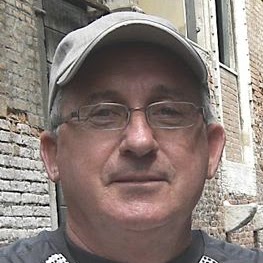David W Goad
age ~82
from Arlington, VA
- Also known as:
-
- David G Goad
- David W Good
David Goad Phones & Addresses
- Arlington, VA
- Cambridge, MA
- Stanford, CA
- 94 Dorchester Rd, Buffalo, NY 14213 • 7168812749
- Barrington, IL
- Arlington Heights, IL
- 353 Richmond Ave APT 5, Buffalo, NY 14222
Us Patents
-
Sintered Valve Metal Powders For Implantable Capacitors
view source -
US Patent:6965510, Nov 15, 2005
-
Filed:Dec 13, 2004
-
Appl. No.:11/010676
-
Inventors:Yanming Liu - Clarence Center NY, US
David Goad - Orchard Park NY, US
Barry Muffoletto - Alden NY, US -
Assignee:Wilson Greatbatch Technologies, Inc. - Clarence NY
-
International Classification:H01G009/042
H01G009/04 -
US Classification:361529, 29 2503, 361532
-
Abstract:A sintering method for valve metal powders, such as tantalum, niobium, aluminum, titanium, and their alloys, is described. The valve metal powders are pressed into a pellet and sintered at a relatively high temperature, but for a relatively short time. The anodized valve metal structure is then useful as an anode in an electrolytic capacitor.
-
Plasma Treatment Of Anodic Oxides For Electrolytic Capacitors
view source -
US Patent:7286336, Oct 23, 2007
-
Filed:May 13, 2005
-
Appl. No.:11/128849
-
Inventors:Yanming Liu - Clarence Center NY, US
Barry Muffoletto - Alden NY, US
David Goad - Orchard Park NY, US -
Assignee:Greatbatch Ltd. - Clarence NY
-
International Classification:H01G 9/04
-
US Classification:361528, 361523, 361525, 361529, 361534, 29 2501, 29 2503
-
Abstract:An oxygen plasma process for treating a dielectric oxide layer, particularly an anodic oxide, subsequent to its incorporation into an electrolytic capacitor is described. The present treatment reduces DC leakage and improves shelf life stability of the resulting capacitor in comparison to anodic oxides treated in a conventional manner. This is important for critical applications such as implantable cardioverter defibrillators where capacitor charging time and charge/discharge energy efficiency are critical.
-
Anodizing Valve Metals By Self-Adjusted Current And Power
view source -
US Patent:7727372, Jun 1, 2010
-
Filed:Dec 5, 2005
-
Appl. No.:11/164751
-
Inventors:Yanming Liu - Clarence Center NY, US
Neal Nesselbeck - Lockport NY, US
David Goad - Buffalo NY, US
Barry Muffoletto - Alden NY, US -
Assignee:Greatbatch Ltd. - Clarence NY
-
International Classification:C25D 11/00
-
US Classification:205106, 205 96, 205108
-
Abstract:A method for anodizing valve metal structures to a target formation voltage is described. The valve metal structures are placed in an anodizing electrolyte and connected to a power supply that generates a source voltage to at least one current limiting device. If at least two current limiting devices are used, they are in series with the valve metal structures with the one current limiting device connected to at least one structure. The valve metal structures are then subjected to a current that decreases over time, a formation voltage that increases over time to a level below the voltage from the power supply and a power level that is self-adjusted to a level that decreases excessive heating in the structure. The invention also includes the components for the method.
-
Method Of Forming Valve Metal Anode Pellets For Capacitors Using Forced Convection Of Liquid Electrolyte During Anodization
view source -
US Patent:7879217, Feb 1, 2011
-
Filed:Dec 1, 2006
-
Appl. No.:11/565766
-
Inventors:David Goad - Buffalo NY, US
Neal Nesselbeck - Lockport NY, US
Jason Hahl - Cheektowaga NY, US -
Assignee:Greatbatch Ltd. - Clarence NY
-
International Classification:C25D 5/08
-
US Classification:205148, 205322, 205323, 204250
-
Abstract:A method and apparatus for anodizing a porous valve metal pellet in a flowing liquid electrolyte is described. The apparatus comprises an insulative container comprised of a lower region, a central region including a cavity for holding the pellet, an upper region, and a continuous passageway extending through the lower, central, and upper regions. Lower and upper screens serving as lower and upper electrodes are disposed in the passageway in the lower and upper container regions, respectively. During anodizing, the electrolyte flows through the lower container region including the lower screen, the porous pellet and then the upper container region including the upper screen. The lower and upper screens are at an opposite electrical polarity as the pellet so that a dielectric oxide is formed on the exposed valve metal including interior portions of the pellet that are exposed to the flowing electrolyte.
-
Valve Metal Anode Pellets For Capacitors Formed Using Forced Convection Of Liquid Electrolyte During Anodization
view source -
US Patent:8313621, Nov 20, 2012
-
Filed:Jan 28, 2011
-
Appl. No.:13/015679
-
Inventors:David Goad - Buffalo NY, US
Neal Nesselbeck - Lockport NY, US
Jason Hahl - Cheektowaga NY, US -
Assignee:Greatbatch Ltd. - Clarence NY
-
International Classification:C25D 17/00
C25D 11/02 -
US Classification:2042751, 205148, 205322
-
Abstract:A method and apparatus for anodizing a porous valve metal pellet in a flowing liquid electrolyte is described. The apparatus comprises an insulative container comprised of a lower region, a central region including a cavity for holding the pellet, an upper region, and a continuous passageway extending through the lower, central, and upper regions. Lower and upper screens serving as lower and upper electrodes are disposed in the passageway in the lower and upper container regions, respectively. During anodizing, the electrolyte flows through the lower container region including the lower screen, the porous pellet and then the upper container region including the upper screen. The lower and upper screens are at an opposite electrical polarity as the pellet so that a dielectric oxide is formed on the exposed valve metal including interior portions of the pellet that are exposed to the flowing electrolyte.
-
Anodizing Valve Metals By Controlled Power
view source -
US Patent:20060191796, Aug 31, 2006
-
Filed:Dec 1, 2005
-
Appl. No.:11/164682
-
Inventors:Barry Muffoletto - Alden NY, US
David Goad - Buffalo NY, US
Neal Nesselbeck - Lockport NY, US
Ashish Shah - East Amherst NY, US
Joseph Spaulding - Williamsville NY, US
Monica Kaforey - Orchard Park NY, US
Christina Scheuer - Amherst NY, US
Yanming Liu - Clarence Center NY, US -
Assignee:Greatbatch, Inc. - Clarence NY
-
International Classification:C25D 5/18
-
US Classification:205102000
-
Abstract:The present invention is directed to a method for anodizing valve metal structures to a target formation voltage with a controlled power source.
-
Anodizing Electrolytes Using A Dual Acid System For High Voltage Electrolytic Capacitor Anodes
view source -
US Patent:20070221507, Sep 27, 2007
-
Filed:Feb 21, 2007
-
Appl. No.:11/677342
-
Inventors:Yanming Liu - Clarence Center NY, US
David Goad - Buffalo NY, US
David Budek - Amherst NY, US
Christina Scheuer - Amherst NY, US -
Assignee:GREATBATCH LTD. - Clarence NY
-
International Classification:C25D 9/00
-
US Classification:205316000
-
Abstract:An improved formation electrolyte and method for anodizing valve metal anodes used in electrolytic capacitors, particularly for high voltage sintered tantalum powder anode, is described. The anodizing electrolyte composition is comprised of 1) a phosphorus oxyacid and/or its salt, such as phosphoric acid and ammonium phosphate; 2) a weak inorganic acid/salt (such as boric acid, ammonium borate) or a weak carboxylic acid/salt; 3) water; and 4) a protic solvent or a mixture of two or more protic solvents. The weak mono-carboxylic acid/salt has 2 to 7 carbon atoms and the weak di- or poly-carboxylic acid/salt has 3 to 13 carbon atoms. The present electrolytes have high anodizing breakdown voltage capability and the formed dielectric oxides have improved oxide quality including good oxide hydration resistant ability, and result in more stable capacitor performance. These properties are particularly important for critical applications such as implantable cardioverter defibrillators (ICDs). Significantly, this means that fewer capacitors are needed to meet an ICD's operating voltage.
Name / Title
Company / Classification
Phones & Addresses
Vice President, Marketing Communications/WebMaster
Tegrity, Inc.
Custom Computer Programming Services
Custom Computer Programming Services
2005 Hamilton Ave SUITE 221, San Jose, CA 95125
4083695150
4083695150
Manager, Marketing Director
TEGRITY INC
Prepackaged Software Services Commercial Nonphysical Research · Custom Computer Programming Services
Prepackaged Software Services Commercial Nonphysical Research · Custom Computer Programming Services
1333 Burr Rdg Pkwy STE 250, Willowbrook, IL 60527
New York, NY 10121
2 Penn Plz, New York, NY 10121
2520 Msn College Blvd #101, Santa Clara, CA 95054
4083695150, 4083695155
New York, NY 10121
2 Penn Plz, New York, NY 10121
2520 Msn College Blvd #101, Santa Clara, CA 95054
4083695150, 4083695155
Incorporator
FALL SANITATION COMPANY, INC
Resumes

Supervisor
view sourceLocation:
1807 Bernadette Ct, Forest Hill, MD 21050
Industry:
Government Administration
Work:
Usaa
Supervisor
Supervisor
Education:
University of Delaware 1990 - 1994

David Goad
view sourceLawyers & Attorneys

David Goad - Lawyer
view sourceISLN:
909896469
Admitted:
1994
University:
Middle Tennessee State University, B.S., 1977; Middle Tennessee State University, M.S., 1981
Law School:
Nashville School of Law, J.D., 1993
Googleplus

David Goad

David Goad

David Goad

David Goad

David Goad
Youtube
Plaxo

David Goad
view sourceTracy, CADavid's 20-year marketing career runs the gamut from large enterprise to ambitious start-ups. He became a believer in online marketing after being introduced to... David's 20-year marketing career runs the gamut from large enterprise to ambitious start-ups. He became a believer in online marketing after being introduced to WebEx and joined the company in 2007. He currently works in the field marketing team for Cisco's Collaboration Software Group, which...

David Goad
view sourceSupervisory Environmental Engineer at US Army Aber...
Flickr
Classmates

David Goad
view sourceSchools:
Treasure Island Elementary School San Francisco CA 1990-1993, Potrero Hill Middle School San Francisco CA 1993-1993, Akers Elementary School Lemoore CA 1993-1995
Community:
David Candelaria, Elec Bristow

David Goad
view sourceSchools:
Smithfield Middle School North Richland Hills TX 1976-1979
Community:
Zol Singleton, Joleen Houdek

David Goad
view sourceSchools:
Clay High School Portsmouth OH 1979-1983
Community:
Sundi Lingle, Cynthia Simmering

David Goad
view sourceSchools:
Big Creek High School War WV 1964-1968
Community:
Brenda Chafin, Edie Justice, Rodney Spears, Mary Addair, Wayne Matney, Sue Barrett, Sheila Jones, Benton Ward, Nora Brewster

David Goad | Bishop Walsh...
view source
David Goad, Northside Hig...
view source
Gamaliel High School, Gam...
view sourceGraduates:
David Goad (1969-1973),
Dale Staples (1977-1981),
Jeff Denhard (1979-1983),
Carey Holland (1979-1983),
Stephen Gillenwater (1976-1980)
Dale Staples (1977-1981),
Jeff Denhard (1979-1983),
Carey Holland (1979-1983),
Stephen Gillenwater (1976-1980)

Smithfield Middle School,...
view sourceGraduates:
David Goad (1976-1979),
Anthony Armstrong (1984-1985)
Anthony Armstrong (1984-1985)

David Goad
view source
David Goad
view source
David Goad
view source
Sfc David Goad
view source
John David Goad
view source
David Goad
view source
David Goad
view source
David Winston Goad
view sourceGet Report for David W Goad from Arlington, VA, age ~82













